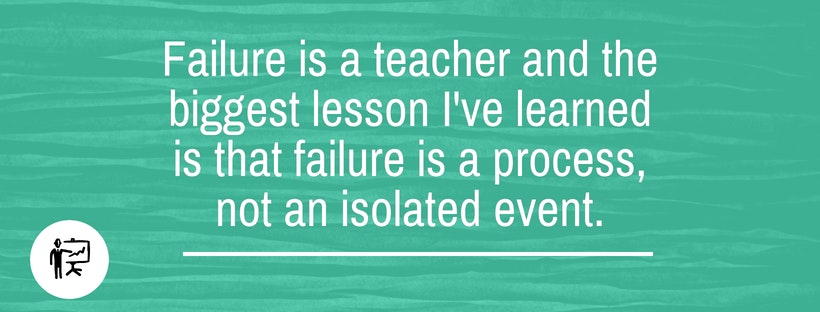The 7 Key Elements of Change

Like many of you, I was taught from an early age that failure is not a good thing … and truly, it isn’t. But there is more to the story.
We are not taught the full truth about failure. As a result, we think of failure as an enemy to be feared and we work hard to avoid it.
But failure is not the enemy, and unfortunately, it is not something we can avoid.
Failure is a teacher and the biggest lesson I've learned is that failure is a process, not an isolated event.
Many years ago, I was part of the leadership team of a large non-profit with a track record of success. The decisions we made potentially impacted many employees and every one of those employees was passionate about making a difference in their community.
In the face of funding challenges, we recognized that we needed to look at the organization’s business model and ask whether it was time for a few changes. Things had gone well in the past, but it was clear that we were nearing the end of the momentum that had carried us to success.
This small group of leaders became convinced that we had to lead the organization through change. Yes, we were in unstable times, but change was essential to the organization’s long-term success and sustainability.
As many of you know, change is not always comfortable.
In spite of that, our leadership team pushed the organization to reimagine its business model. We engaged change leadership experts and had in-depth consultations.
But as I said, change can be uncomfortable. There will always be forces within any organization afraid of change. If the change process is not managed well, these forces can eventually drown out the voices of leaders who were working to create change.
From this experience, that is exactly what happened. As a leadership team, we failed to lead the change process. Support for status quo prevailed.
I was disheartened, but I learned a lot.
Success is a process and so is failure. Success doesn’t happen in a day and failure doesn't either. Failure is the accumulation of ineffective choices and the consequences that result.
Each decision not to carry out a strategy that would've changed the organization’s business model added to the process. Failure did not take place all at once the day the change initiative was shut down.
Instead, it happened one decision at a time over many months.

Here are some of the things I learned from this experience. Whether you're leading a for-profit or a non-profit organization, these four tips can help you manage change:
- Keep rolling. Even though the change process is uncomfortable, effective leaders press on. They recognize, as Seth Godin says, “The best time to change your organization’s business model is while you still have momentum.”
- Recognize the power of choice. The decision to lead change or to stick with the status quo is a choice. Every choice has consequences.
- Be strong and keep going. Change, no matter how necessary, does not happen easily. It requires commitment and ongoing effort.
- Change takes time. Successful change leadership is a process.
As I mentioned earlier, change is a process. For that process to be successful, it needs seven key elements:
- A Sense of Urgency – In order for a change process to be successful, everyone in the organization must understand its importance. Those who will be impacted by the change need to feel its urgency. That is what drives the change forward.
- An Empowered Change Leadership Team – Even before the process starts, ensure that the change leadership team is empowered to lead the process. I recommend that you select one voice to represent the team. Pick someone able to balance a sense of urgency with empathy for those who are uncomfortable with change.
- A Clear Vision – Any change process must be supported by a clear vision of what the organization will look like after the change has been implemented.
- A Shared Vision – Successful change depends on everyone understanding the benefits of the change and imagining what the organization will be capable of doing once the change has been implemented. The leadership team should communicate the future vision of the organization several times. This should happen not only while the change is being implemented, but also after the change process has been completed.
- Celebration of Wins – Change management is a process. There are many accomplishments along the way. Remember to celebrate each win and share that celebration with the organization as a whole. This helps build momentum.
- A Culture of Culture – Change comes from within the organization. It starts as an urge for improvement and it needs to be nurtured. Looking back, I wonder if the change initiative I was involved in would have been more successful if we'd asked the hired change experts earlier to help us develop a culture open to change.
- Persistence – Even with the clearest sense of urgency, clarity of vision, effective communication and early wins, there will always be resistance to change. Sometimes there might be a lot of resistance. Persist anyway!
As Seth Godin says:
"Remarkable visions and genuine insights are always met with resistance. And when you start to make progress, your efforts are met with even more resistance… If it were any other way, it would be easy. And if it were any other way, everyone would do it and your work would ultimately be devalued. The yin and yan are clear: without people pushing against your quest to do something worth talking about, its unlikely to be worth the journey. Persist.”
Call to Action
How effective is your organization at recognizing the need for change and managing the process of change?
The best is yet to come. It starts with you.
Your friends,
UpCloseTeam




